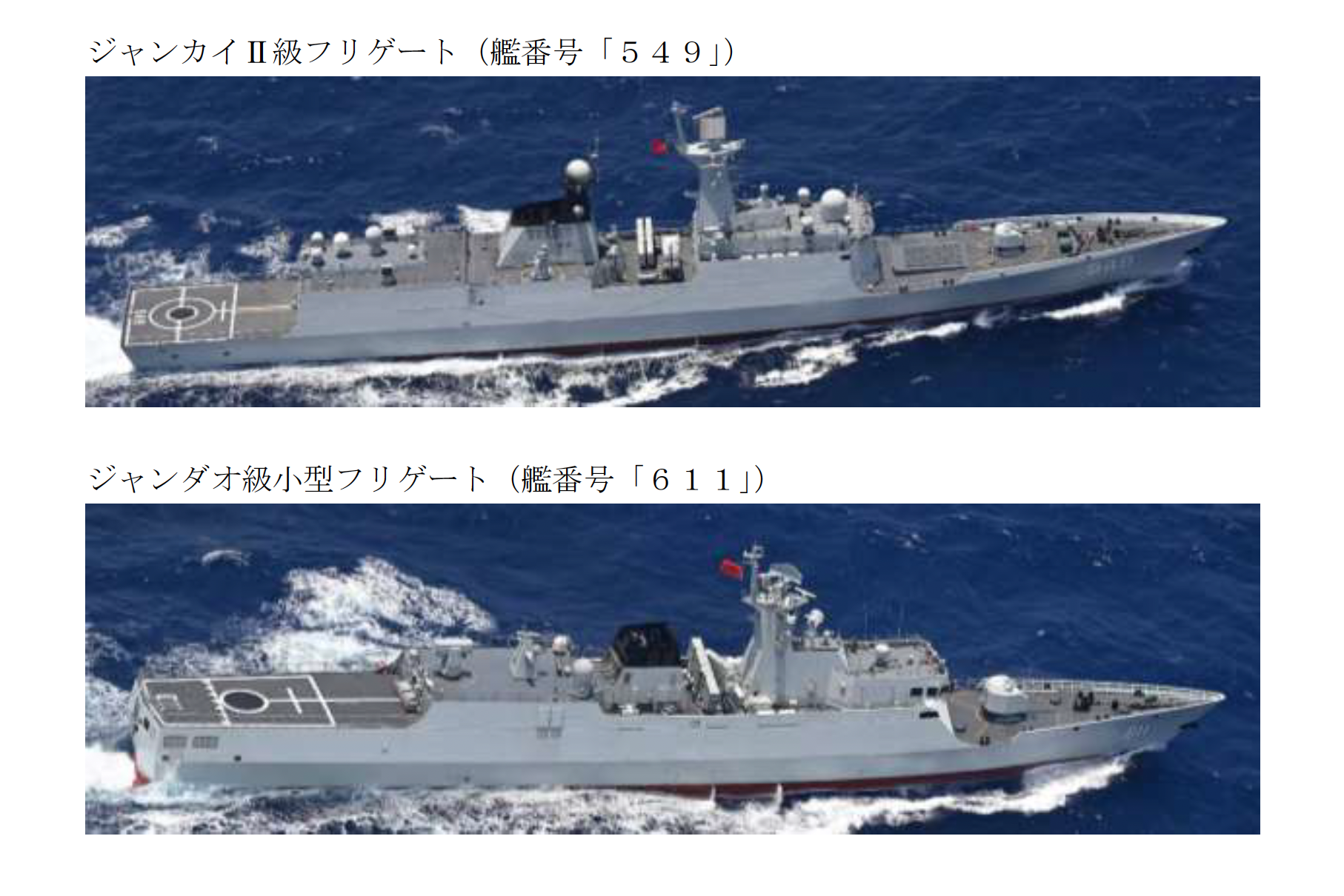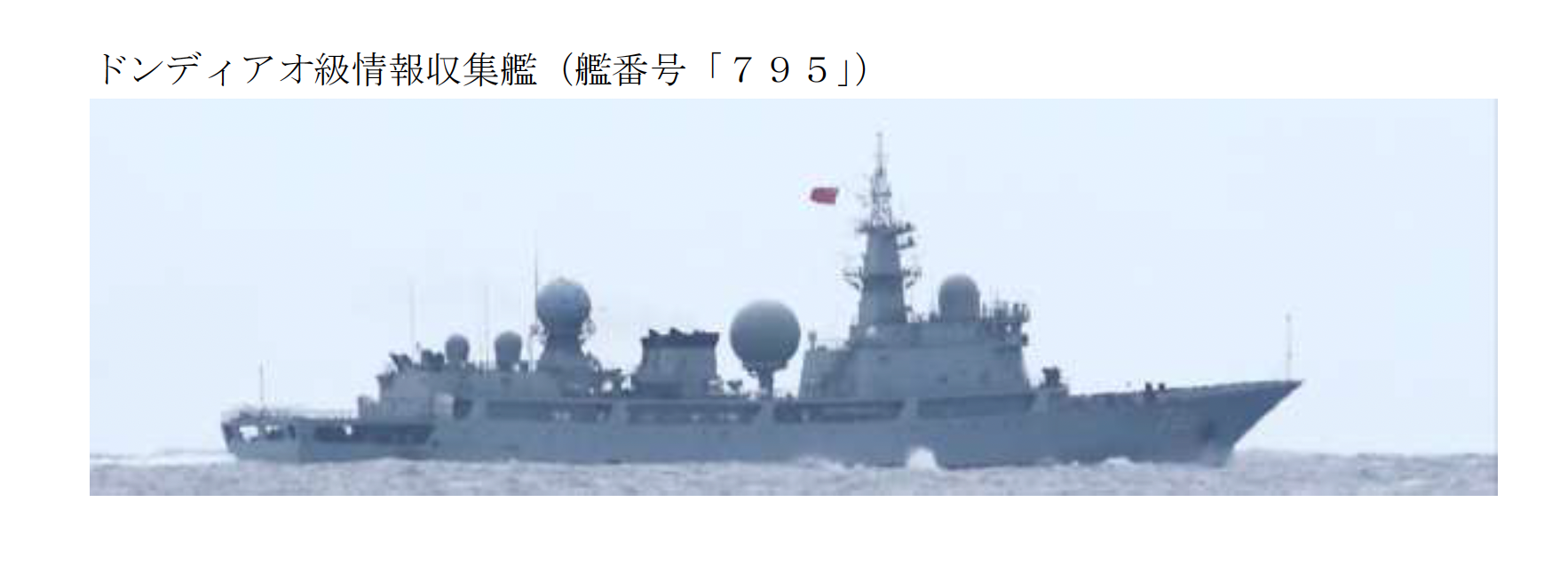
A pair of People’s Liberation Army Navy frigates sailed around Japan’s southwest islands from this week, while a PLAN intelligence ship transited the Miyako Strait to enter the East China Sea on Thursday, according to Japan’s Joint Staff Office.
On Thursday at noon local time, PLAN frigates CNS Changzhou (549) and CNS Luan (611) were sighted sailing northwest in an area 43 miles southwest of Yonaguni Island, the JSO said in a Friday news release. The two PLAN frigates then sailed north in the waters between Yonaguni Island and Taiwan and were subsequently sighted sailing north in an area 50 miles west of Uotsuri Island, which is part of Japan’s Senkaku Islands group that both China and Taiwan claim. The PLAN ships had earlier sailed east through the Osumi Strait on Sunday, the release noted. Japan Maritime Self-Defense Force destroyer JS Yamagiri (DD-152) and a JMSDF P-3C Orion Maritime Patrol Aircraft (MPA) of Fleet Air Wing 5 based at Naha Air Base, Okinawa, shadowed the PLAN frigates.
Changzhou and Luan were also sighted sailing east at 10 a.m. on Sunday in an area 25 miles south of the Kusagaki islets, the JSO said in a Tuesday news release. The ships subsequently sailed east through the Osumi Strait. A JMSDF P-1 MPA of Fleet Air Wing 1 based at JMSDF Kanoya Air Base on the main island of Kyushu surveilled the PLAN ships, according to the release.
Japan’s straits are largely international waterways allowing foreign vessels to pass freely through them. But Japan monitors all passages of Russian and Chinese ships, which JMSDF ships and aircraft shadow. PLAN ships routinely sail through Japan’s southwest islands to enter the Pacific Ocean and Philippine Sea, or to return to China through the East China Sea.
The PLAN’s Liaoning and Shandong Carrier Strike Groups have also conducted carrier flight operations in international waters around Japan’s southwest islands, though these drills usually happen at an average distance of 62 miles or more from the nearest Japanese island. With China’s claim to the Senkaku Islands, Japan has increased its military presence and capabilities in the region, including basing ground based anti-ship missiles and making plans to deploy various ground-based smart and loitering munitions to counter island invasions.

On Thursday, Dongdiao-class surveillance ship Dubhe (795) was sighted sailing northwest in an area 87 miles east of Miyako Island, the JSO said in a news release. Dubhe subsequently sailed northwest through the Miyako Strait between Miyako Island and Okinawa to enter the East China Sea. JMSDF minesweeper JS Kuroshima (MSC-692) monitored the Chinese surveillance ship.
Meanwhile, on Wednesday the JMSDF announced that the first surface unit of the JMSDF Indo-Pacific Deployment 2024 (IPD24), tank landing ship JS Kunisaki (LST-4003), departed Kure Naval Base on May 3 for a four month deployment that includes participating in Exercise Marara 2024. Marara is a French-led multinational humanitarian assistance and disaster relief exercise held in French Polynesia. Kunisaki will also participate in the biennial Rim of the Pacific 2024, a U.S. Pacific Fleet-led multinational exercise scheduled to take place this summer around Hawaii.
On Friday, the JMSDF announced in a news release that the JMSDF, Royal Australian Navy and U.S. Pacific Fleet signed a memorandum on information warfare. The signatories are JMSDF Fleet Commander Vice Adm. Akira Sato, Rear. Adm. Michael Vernazza, the commander of the Fleet Information Warfare Command Pacific at Joint Base Pearl Harbor-Hickam in Hawaii, and RAN Rear Adm. Christopher Smith.
“The Memorandum of JMSDF-U.S. Pacific Fleet-Royal Australian Navy IW Cooperation will deepen cooperation of all partners on non-kinetic information operations related to intelligence, communications, meteorology/oceanography, electromagnetic, cyber and space domains, in addition to kinetic operations of the three fleets, for a ‘Free and Open Indo-Pacific’ under the increasingly complex and severe security environment in the Indo-Pacific region,” reads the news release.





